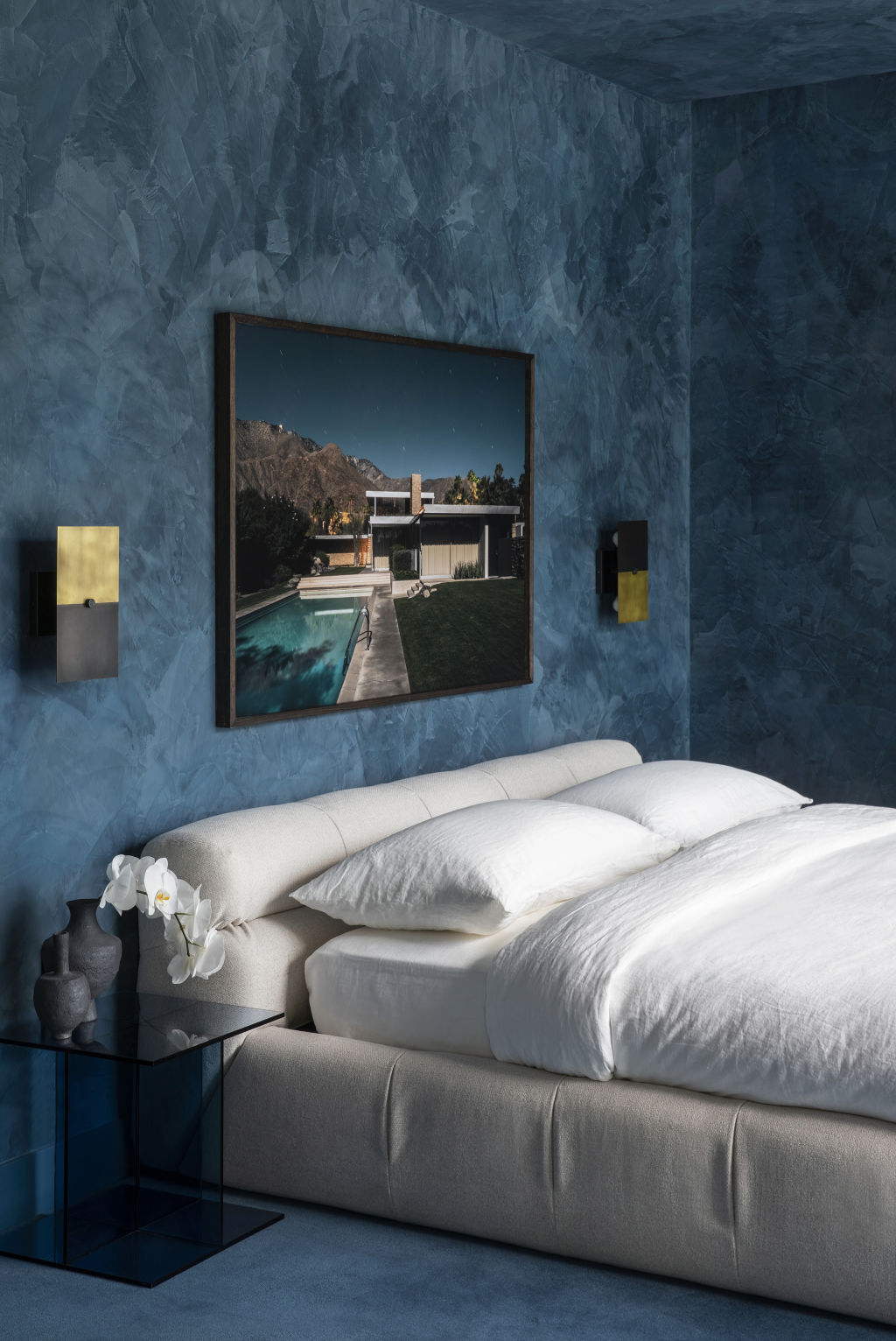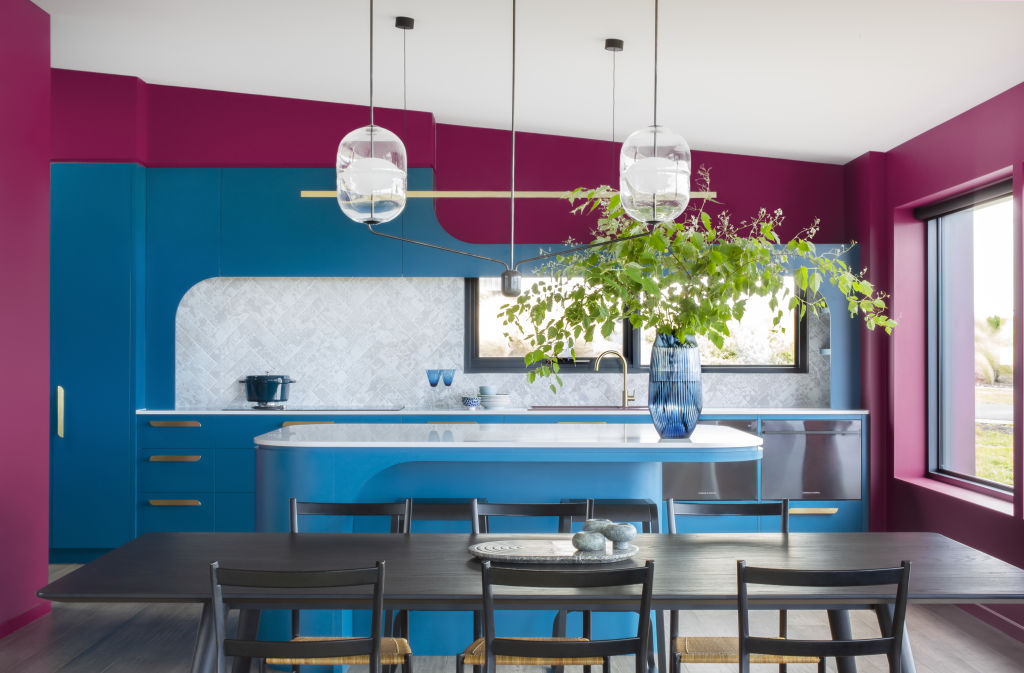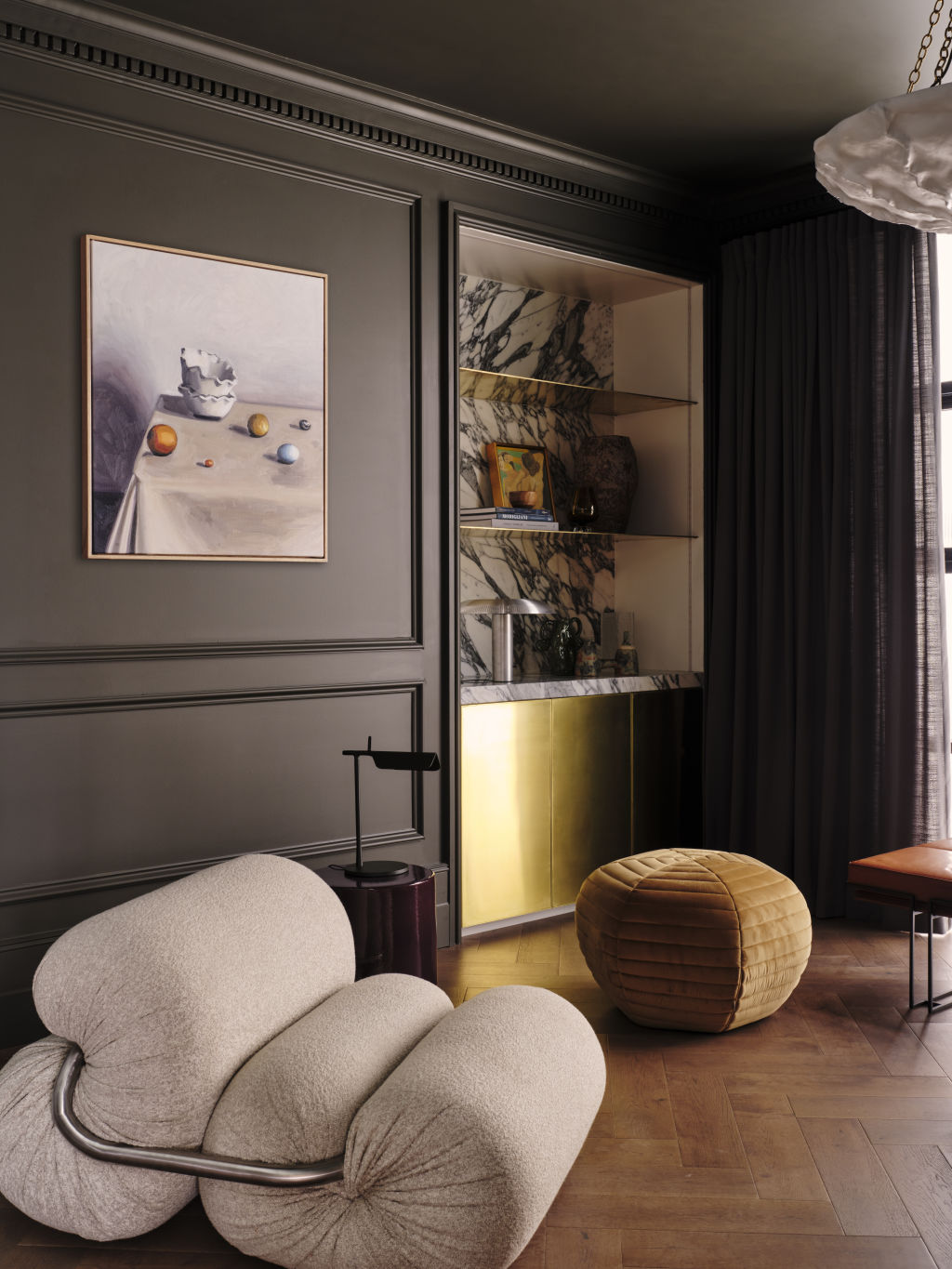Learn More
Five interior design rules meant to be broken
Rule 1: White, light bedrooms create the most peaceful retreat

“Natural light is the holy grail, but in this case, it was about controlling the light so it is dappled and natural,” she says. “I find blue restful to sleep in, and for this bachelor pad, it was a great outcome – masculine and cool, but still serene.”
For Hing, a sleepy bedroom is one that embraces colour saturation and tones for a subtle “murkiness”. Polished plaster is used for depth and detail and executed in a singular colour, creating a cocooning sensation.
“The depth of colour feels mysterious and has a calming effect, and light sheers and a cream bed are a counterpoint to the blue, allowing it to shine,” she says.

Rule 2: Always use symmetry in design
While there is an emphasis on symmetry and order in classic architectural details, designer Lara Ette says it isn’t the only way to create beautifully cohesive designs.
What is ‘colour drenching’ and how can I do it at home?

Rule 3: White walls never go out of fashion
While an all-white interior can look chic and fresh, designer Kate Challis says it isn’t always an easy scheme to execute.
“White requires real finesse, styling and layering to look great,” she says. “Very few people know how to make white work. Usually, it just ends up looking bland and devoid of personality.”
Combine your favourite vibrant hues or pluck a colour from an element in the space, such as patterned upholstery, artwork or floor rug.
“I was recently in Mexico where the houses are painted in bold colours as they believe that colour breathes life into their town,” she says. “Be inspired by wallpaper, patterned tiles, colourful natural stone and bold colours, and do what makes you happy.”

“I think this is just a silly saying!” says designer Nickolas Gurtler. “Colour should be combined and experimented with, and blue and green naturally pair beautifully and can be calming or energising depending on their application.”
Look for soothing blue-green hues like teal, turquoise and aquamarine, take inspiration from nature and add a neutral tone for flair.
“Stainless steel, glass and walnut timber mixed with blues and greens makes for a sophisticated space,” Gurtler says. “Just don’t confuse the undertones – being a secondary colour, greens, in particular, have a wide variety of undertones, so combining brown or yellow-toned greens with blues can be tricky.”

White ceilings are popular for creating the illusion of depth, for light, and for ease of maintenance.
“Painting your ceiling white depends on the mood you want to create, but I’m a big fan of making small spaces moody, and painting the ceiling a colour keeps it cosy,” says SMAC Studio designer Shona McElroy.
Considered the fifth wall of a space, a ceiling’s colour is more critical to the room’s overall feel than you might think. Try colour-blocking with a light and dark version of the same hue, or for an all-enveloping feel, match coloured walls with the ceiling. Or, take a leaf from McElroy’s style book and paint it black, which can feel dramatic and make the space feel larger.
Source: https://www.domain.com.au/